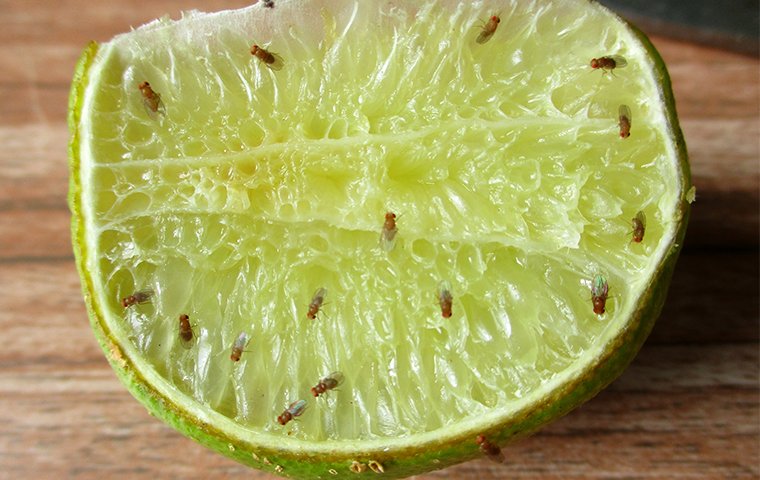WHAT ARE COCKROACHES?
Cockroaches are ancient insects, seventy species of which live in the United States, with only a handful of those living near people. These adaptable insects can thrive in a variety of indoor and outdoor environments, and because they are prolific breeders, they can quickly take over any property.
Described below are the most common species of cockroaches to invade New York City structures:
- American cockroaches
American cockroaches enjoy a more outdoor lifestyle but do make their way inside homes while foraging for food and shelter. They are the largest structure-invading cockroaches in the United States, growing to between 1-1/4 and 2 inches long. These cockroaches are a mahogany color with a yellowish pattern that resembles a figure-8 behind their heads. They fly short distances. - German cockroaches
German cockroaches are a major urban pest and prefer to live inside. They are problematic inside homes and businesses, especially restaurants or any other place there is food storage. These cockroaches are a light brown to tan color and have two horizontal dark stripes behind their heads. Though German cockroaches have wings, they do not fly. These cockroaches are fast movers and scurry out of sight when disturbed. - Oriental cockroaches
Oriental cockroaches – sometimes called “water bugs,” because they live around drains and sewers – do not fly. Adults have smooth, shiny, dark black bodies, and they produce an unpleasant, musty odor.
ARE COCKROACHES DANGEROUS?
Cockroaches are dangerous pests because they contaminate food, dishes, utensils, cabinets, and surfaces with viruses, bacteria, human pathogens, and parasites – spreading diseases that make people ill. Additionally, their shed skins and excrement trigger allergies and asthma attacks in people, mostly in young children and people with weakened immune systems. In the case of a large infestation, cockroaches may bite sleeping people, trying to feed on their dead skin cells. In addition to health risks, cockroaches damage personal property by staining and chewing fabric items, papers, and more.
WHY DO I HAVE A COCKROACH PROBLEM?
Cockroaches thrive in urban areas because there are plenty of indoor shelters that allow them to breed and feed year-round. Our homes and businesses provide cockroaches with plenty of food and water sources; they move in through openings in the foundation, spaces around air conditioners, drains, holes in screens, and open windows and doors.
People also unknowingly introduce cockroaches into their own homes or buildings. They hitchhike their way inside in delivery boxes, grocery deliveries, used appliances, or even on the bottom of our shoes! They also move into new locations through walls and under doors in apartment buildings. Cockroaches are hard to avoid – especially in urban areas, where they live in large, dense populations. A cockroach infestation can occur on any property at any time of year.
WHERE WILL I FIND COCKROACHES?
Cockroaches thrive in a variety of outdoor environments such as dumpsters, sewers, drains, and in parks, under mulch and behind tree bark. Inside, cockroaches live in damp, dark areas like basements, bathrooms, kitchens, and laundry rooms. Common hiding spots include drawers, under sinks, closets, wall voids, under floors, and behind appliances.
HOW DO I GET RID OF COCKROACHES?
Partnering with Broadway Pest Services is the best way to get rid of cockroaches from your New York City property. Our pest management technicians are highly trained and use the latest advancements in technology and science to effectively eliminate pests from residential and commercial properties. At Broadway Pest Services, we provide excellent customer service and the pest control services needed to get and keep cockroaches out using inspection, treatment, and exclusion measures.
At Broadway Pest Services, we know the pests that find their way into New York City structures and how to protect people and property from the damage and dangers they create. If you would like to learn more about our cockroach control solutions, reach out and speak to one of our helpful and friendly professionals today!
HOW CAN I PREVENT COCKROACHES IN THE FUTURE?
In addition to our residential pest control and commercial pest control service offerings, our professionals recommend the following tips:
- Inside, store all food in the refrigerator or sealed glass or plastic containers.
- Place mesh covers over vents and drains leading into your home.
- Make sure dumpsters or trash cans have tight-fitting lids.
- Use dehumidifiers to keep basements dried out.
- Fix leaky pipes and fixtures.
- Install door sweeps on exterior doors.
- Keep outdoor eating areas are free of food debris.
- Vacuum floors, wipe down counters, and wash dishes daily.
- Seal spaces around air-conditioners and utilities entering your house.
- Eliminate entry points into your structure by sealing cracks in the foundation, exterior walls, and roofline.
Categories:







